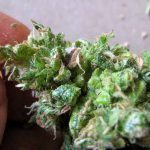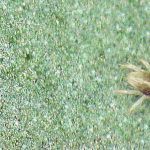How to solve problems with a marijuana plant?
Growing a marijuana plant may seem as simple as planting a seed and watering it occasionally. While it is a relatively straightforward process, it is not without its challenges. Read on to learn how to address common problems that may arise when cultivating a marijuana plant.
Problems when growing marijuana plants
Problems can arise a few months later when the plant begins to show worrying symptoms that something is wrong. This guide aims to help interpret these problems based on the clues the plant provides. It should serve as a general orientation, as each plant, grower, and garden is unique.
This guide has been compiled by collecting and improving content from the Internet. It is published here for informational purposes and is not intended to encourage the cultivation of marijuana. Please respect the laws of your place of residence. This guide provides theoretical information on solving problems with cannabis plants and should only be used if the cultivation of marijuana is legal in your area.
At the end of this content, we offer a link to another list containing the most common mistakes made when growing marijuana. We recommend reading it later, especially if you do not find the information you are looking for here.
How to use this guide?
The guide to solve marijuana problems is read starting with point number one, to continue reading point by point, until you find the number that best fits the problem you are looking for.

Solving problems with a marijuana plant
When there is a problem, the marijuana plant manifests certain symptoms, usually in the form of morphological or coloration changes. These symptoms help identify the underlying issue. The advice given here is based on studying the coloration of the marijuana plants and other aspects to determine what elements might be missing in their feeding. A healthy plant will not exhibit any of these symptoms.
Diagnosis and solutions
- If the problem only affects the middle or lower part of the marijuana plant, read on to number 2. If the color change only affects the growing tips or the top of the plant, go to number 10.
- Leaves are uniformly yellow or light green, less dark than usual; leaves are dying and drooping; growth is slow. Leaf margins are not twisted. Diagnosis: nitrogen (N) deficiency. If not, go to number 3.
- If the leaf tips are twisted and the leaves are yellowing or turning brown, but the leaf veins remain green. Rusty brown areas of necrosis appear. Diagnosis: magnesium (Mg) deficiency. If not, go to number 4.
- Should marijuana leaves turn brown or yellow from the edges towards the center. Areas of yellow or brown necrosis appear, especially at the edges of the leaves, which may be twisted. Plants may be very tall, but leaves drop easily. Diagnosis: potassium (K) deficiency. If not, go to number 5.
- In case you have plants with the leaves are dark green, almost bluish or with a purple tone pulling to red sometimes. With the stems and petioles of marijuana leaves acquiring purple or reddish tones (although it does not always happen). Dark purple to black areas of necrosis appear on the leaves, especially on older leaves and those of intermediate age. Eventually, the leaves twist and die. The dead leaves are twisted and wrinkled with a characteristic ochre color. Growth is slow and leaves are small. Diagnosis: phosphorus (P) deficiency. If not, go to number 6.
- In this case the leaf tips are yellow, brown or dead. However, the plant is perceived as healthy and green. A clue may be that the stems become softer than usual. Diagnosis: over fertilization of nitrogen, over watering, damaged roots or insufficient aeration of the soil (put more sand or perlite in the mix). Sometimes it is due to a lack of nitrogen, phosphorus or potassium. If not, go to number 7.
- Leaves curl downward, making a very characteristic claw-like shape and turn dark green, gray, brown or golden. Diagnosis: over fertilization (excess nitrogen). If not, go to number 8.
- The whole plant is wilted or withered and the soil is wet. Diagnosis: over-fertilization, soil too wet for too long (remember to water only when it is completely dry, see how to water marijuana), damaged roots, some disease, copper deficiency (very rare to occur). Otherwise, go to number 9.
- Marijuana plants have 12 hours of darkness for two weeks and do not bloom. Diagnosis: the night period is not completely dark, we must find and eliminate residual light sources that can wake up the plants during the nights. Too much nitrogen. Too much pruning or cuttings. If not, go to number 10.
- Leaves are yellow or whitish, but nerves remain green. Diagnosis: iron (Fe) deficiency, possibly due to too high pH. If not, go to number 11.
- Leaves twist, then turn brown or die. Diagnosis: in an indoor crop, the lights are too close together. Rarely, a calcium (Ca) or boron deficiency. If not, go to number 12.
- Your plant may be a weak plant, if the seed hatches it is understood that it has gone through the more complicated process and should do well, but in a very small percentage of cases that plant may not be strong enough to survive once out.
More Cannabis troubleshooting tips
Unfortunately, problems with marijuana plants do not usually come alone. The most common is that there are two or more deficiencies or problems at the same time, or several excesses, especially those of microelements.
Usually, the problems are not due to a lack of one or several elements, but to a lack of knowledge of the PH, the EC or salts accumulated in the soil, unless you do not add any fertilizer and then you will have all the problems.
In case of having problems of this type the most advisable thing is to use an ezimatic product that helps to clean the soil of salts and to correct the values of PH and Ec to the suitable ranges, this frees the roots and allows them to grow healthy again, contributing this health to the rest of the plant. Once this problem is fixed, a new cycle of risks can be started with the right amount of nutrients. After all this, the plant will start to grow normally again.
As we have already mentioned, it is vital to feed the plants, if we do not do this we will surely have deficiencies and if several of them are mixed it is more complicated to recognize and cure them, so you should always use NPK fertilizers with microelements and macroelements throughout the life of the plant. In addition, to avoid problems, you should always control the PH and Ec.
We have another content where we delve into the subject of problems with the cultivation of marijuana, but with a different approach. Instead of looking at what the plant tells us, we focus on commenting one by one the most common mistakes that are usually made when growing marijuana.
We recommend you to continue reading with other articles with tips and tricks, how to solve cannabis deficiences.
Founder of Experiencia Natural, creative and entrepreneur, designer, master in grower and marketing. For a normalization of all plants and substances, giving priority to patients and users.















